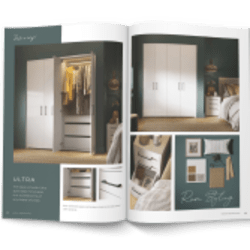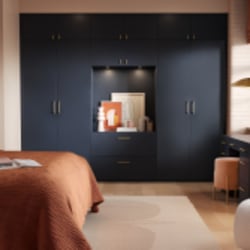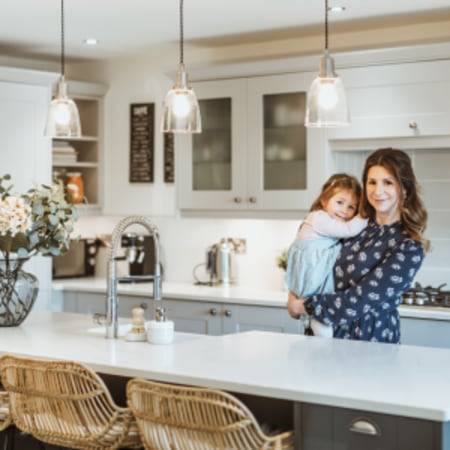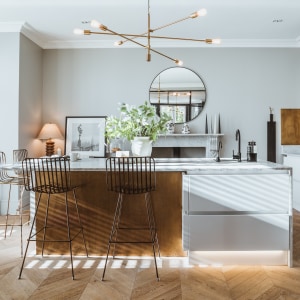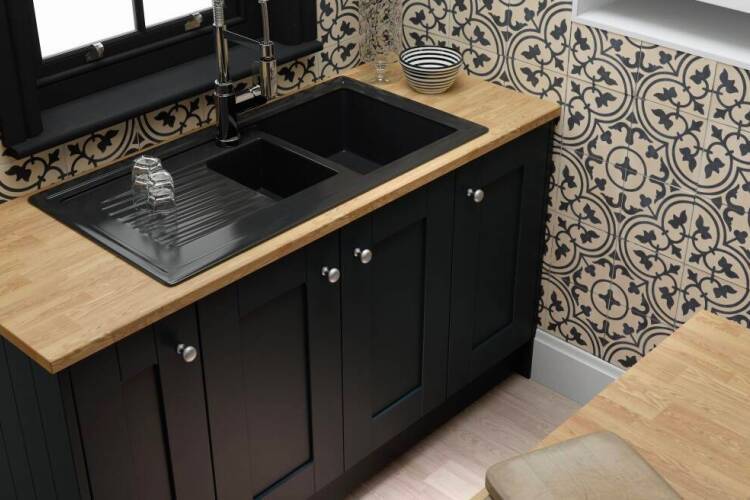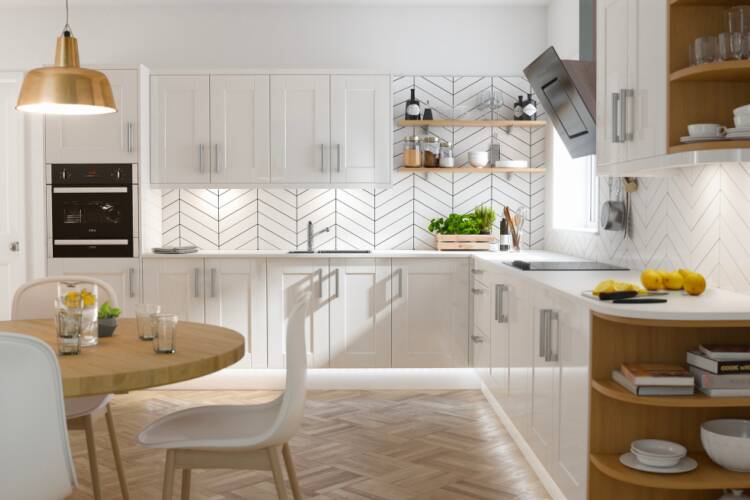How to design a kitchen island with a hob and extractor fan
Layout ideas
A kitchen island with a hob and extractor fan can serve as your central cooking space, which is a great way to create a kitchen layout that feels open and welcoming. Having cooking facilities built into your kitchen island gives you the option to socialise while preparing food, which is ideal for those who like to cook for friends, or families looking for a chance to catch up at the end of the day.
To make sure that your kitchen island with hob and extractor fan is practical as well as beautiful, there are a few things to think about during the design process. We tell you everything you need to know about designing a kitchen island with a hob and extractor fan, so you can create a kitchen that looks and feels effortless.

Working with the wider kitchen layout
The ideal kitchen layout follows a triangle shape between the hob, the sink, and the fridge, as outlined in our guide to planning your kitchen appliance layout. As the hob will be set into the kitchen island in the centre of the room, the sink and fridge should ideally be easily accessible behind the hob-side of the island.
As well as considering the location of the fridge and the sink, it's worth thinking about whether you only want the hob on the island, or if you'd prefer a kitchen island with a hob and oven.
Choosing to also add the oven to the island is a space-saving option that keeps all of the cooking in one area of the room, but it also means you'll need to consider whether you have enough space leftover for prepping and serving food.
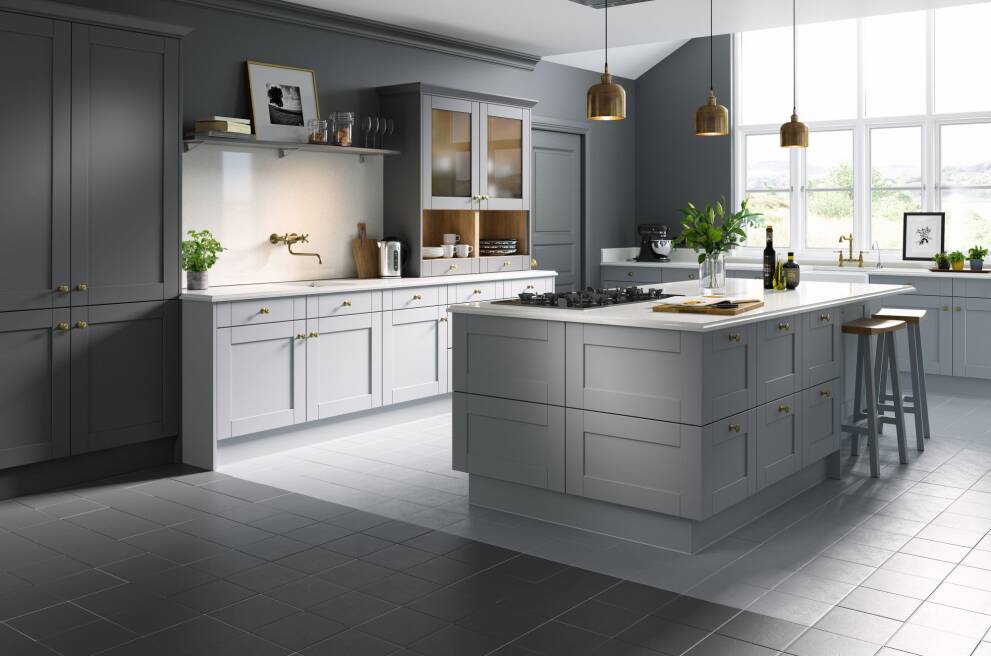
The size of the island
If you've chosen to have a hob and extractor hood on the island, its primary purpose will be for cooking. However, if you have any other functions for your island in mind – such as storage and seating – you'll need to carefully consider both the size of the island and the space around the unit.
Length
One vital measurement to consider is the space around the hob. Gas regulations require a minimum of 30cm at either side of a gas hob, and 15cm at either side of an induction hob. This means that when calculating the length of the island, you must add at least 30cm or 15cm to the size of the hob itself. Of course, you may want to add much more space to either side, to accommodate food prep space.
If you choose to design a kitchen island with hob and seating, you'll need to consider how many people you'd like the area to serve. For each person to sit and eat comfortably, allow at least 60cm per person. This is another consideration when choosing the length of the island.
Depth
For depth measurements, any appliances or storage needs you have will be the main deciding factor, as well as the presence of a breakfast bar. Standard under island cupboards are 60cm deep, while built under ovens are usually between 60-75cm deep. At the other side of the island, a seating area is usually the same depth as a cupboard (60cm), as well as requiring 30-40cm of overhang on the counter itself.
Surrounding space
The recommended minimum space surrounding all sides of the island is at least 100cm, to allow for other kitchen units to be safely used and accessed. This may feel too small for some kitchens, especially those which are regularly busy, and as such it's important to note how much space you practically feel you'll need around the island.
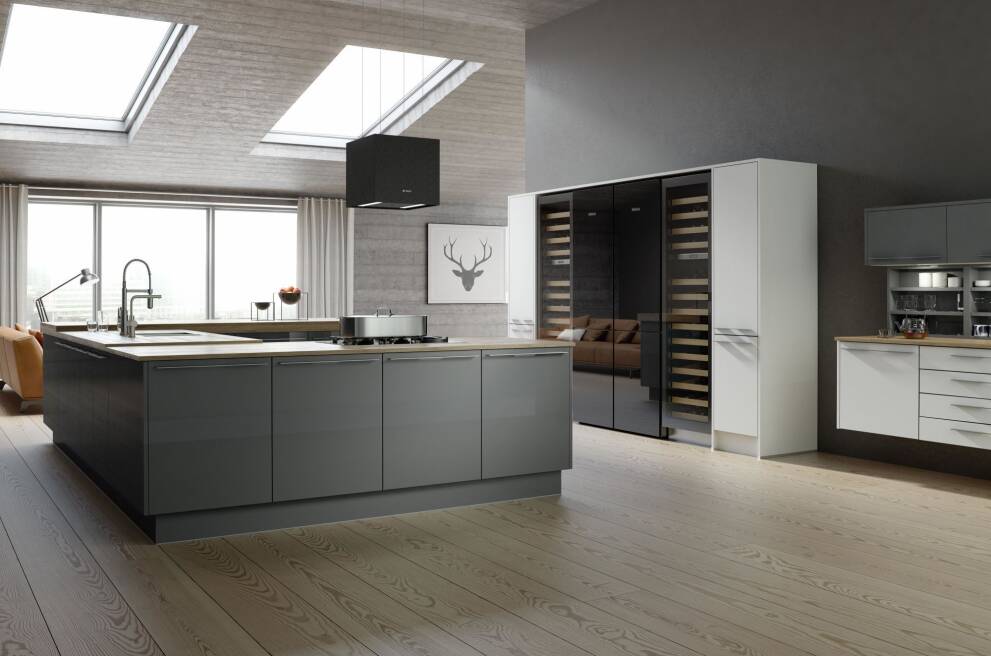
Choosing an extractor fan
A kitchen island hood is slightly different from a standard extractor, as it's based in the centre of the room rather than to the side or against a wall. As such, you'll need to choose your extractor from a selection of specialist island hoods.
Just as you would expect from any other extractor hood, there are a variety of options available that can suit your kitchen needs:
Duct exhaust system
A traditional extractor hood system, the duct filters the air directly out of the house. This is usually a simple system to install when the hood is attached to an exterior wall, but requires a more complex installation when installed in the centre of the ceiling over a kitchen island.
The benefits of a duct exhaust system include low levels of maintenance in the cleaning and filter system, as well as being a highly efficient means of extracting cooking smoke and steam.
Non-vented system
Unlike a duct exhaust system, a non-vented system filters and recycles the air, pumping the extracted air back into the room. These extractors are very simple to install in the centre of the room as they require no exhaust system to be threaded through the house.
Despite their simple installation, there are some things to consider. Filters will require regular cleaning and changing and they are not as efficient as a duct exhaust system, which may make them inappropriate for kitchens where the fan is heavily used.
What style extractor fan should I choose?
There are a variety of extractor hood styles available in both options, with some designed to be used as both a duct exhaust system and a non-vented system, depending on the requirements of your kitchen:
- Chimney cooker hood: These traditionally designed extractors make a real style statement in the centre of the room and best suit dramatic kitchen designs, whether contemporary or traditional.
- Cylinder hood: Best suited for modern kitchen designs, these sleek and stylish hoods are a minimalist dream, and work well in kitchens that draw focus using the island itself, rather than the additional appliances.
- Hanging hood: Using discrete wires, these compact hoods are available in a range of colours, shapes and designs to suit a variety of designs, and can work well in smaller kitchens.
Designing your kitchen island with a hob and extractor fan doesn't have to be difficult. Our in-store designers can help you to create your dream island, and with expert installation from qualified fitters, your design could soon become a reality.
Book your home measurement to check that an island is right for your kitchen, or arrange an appointment to speak directly to a designer.







